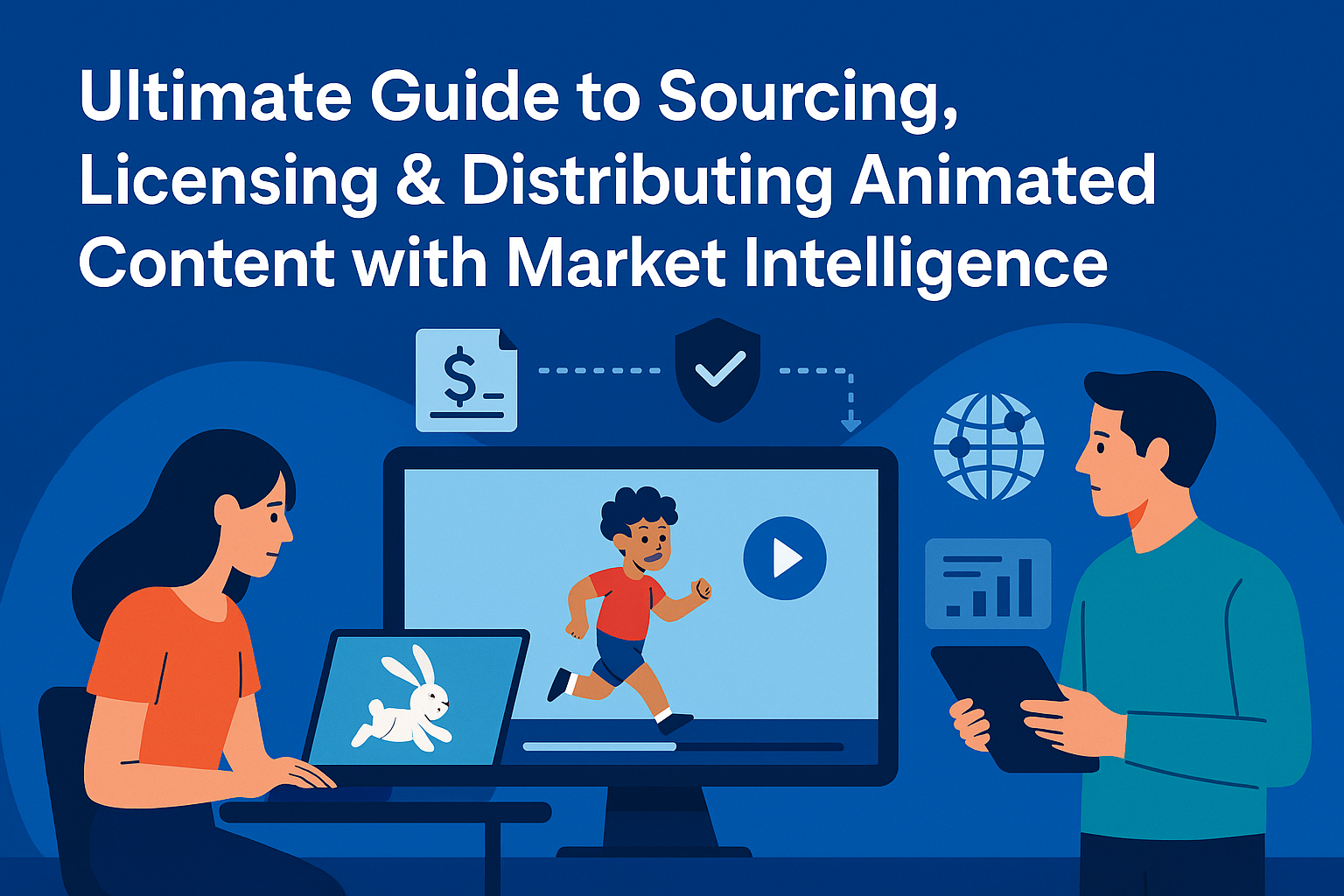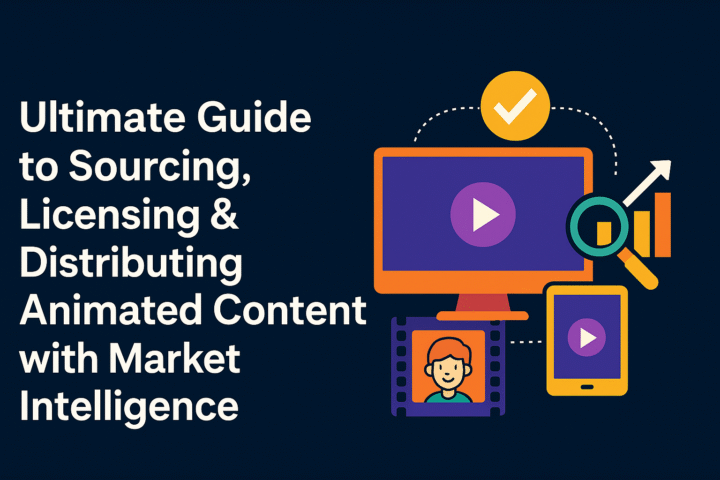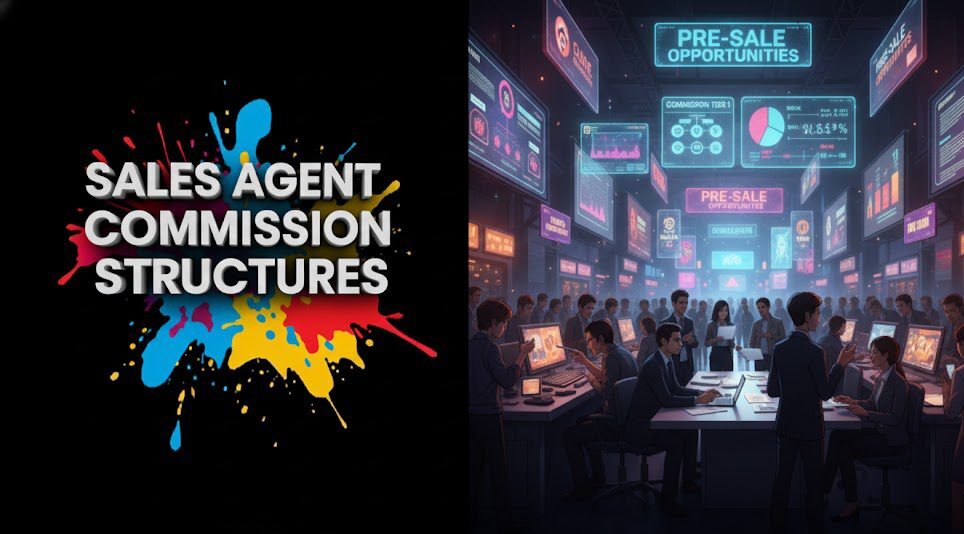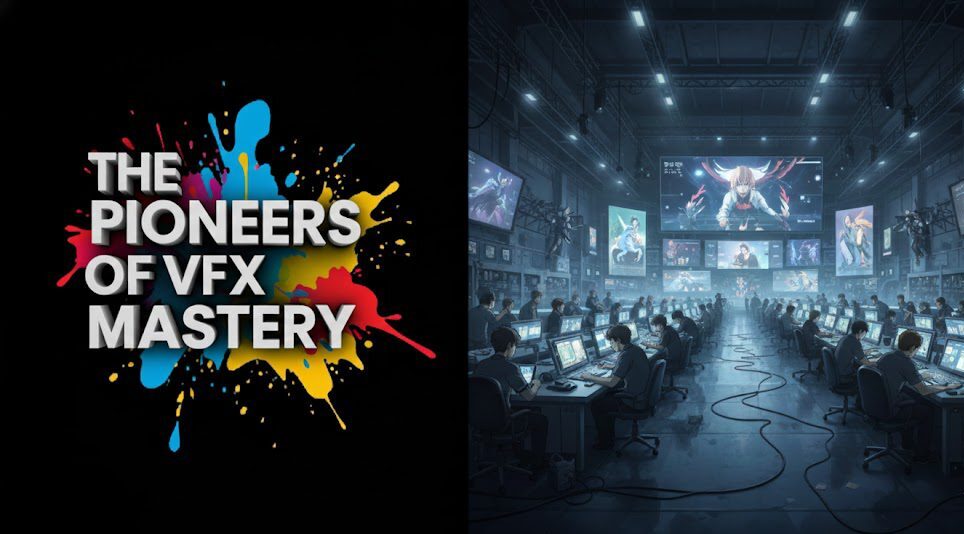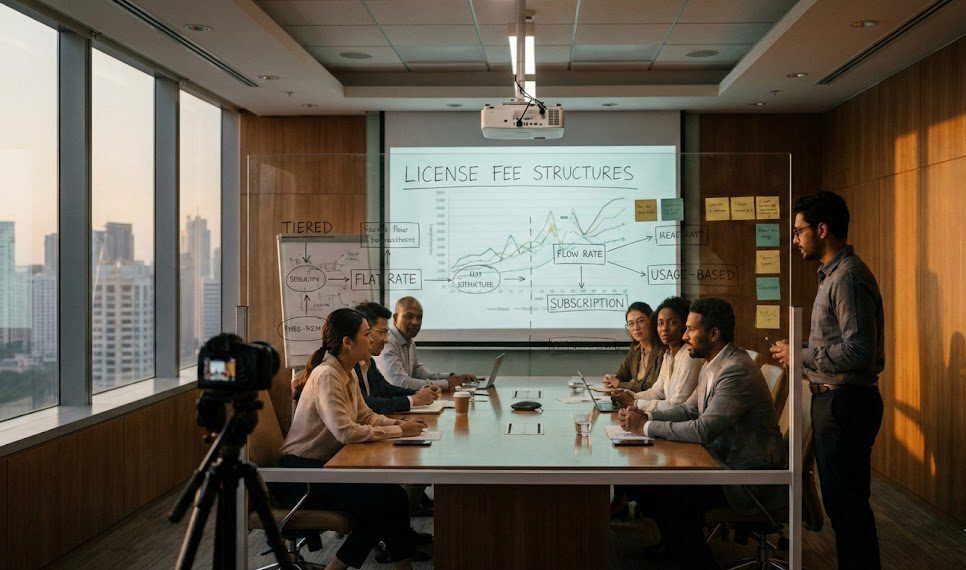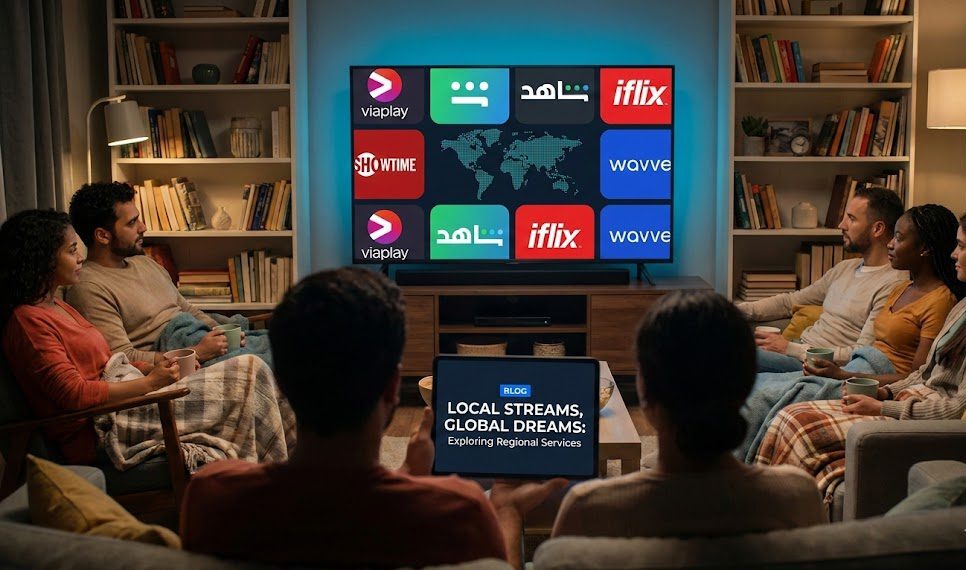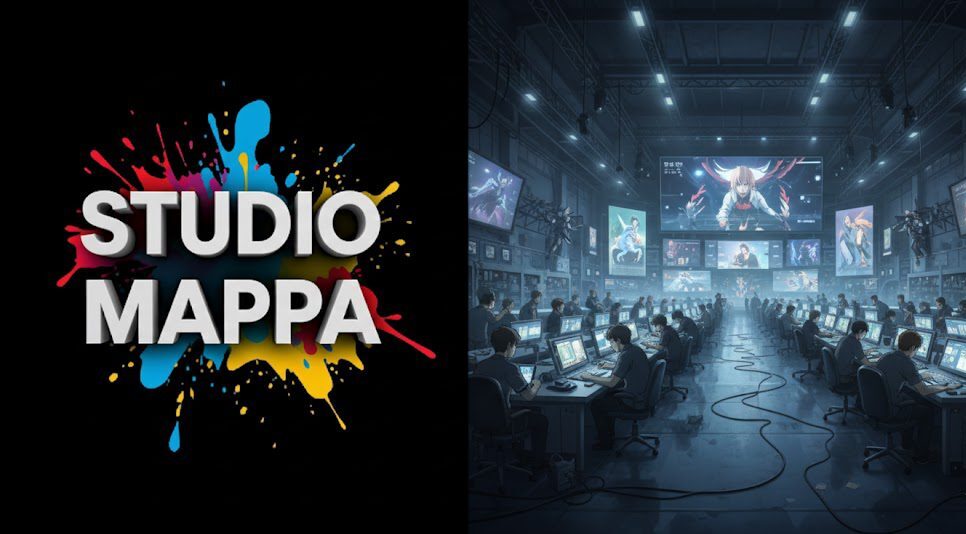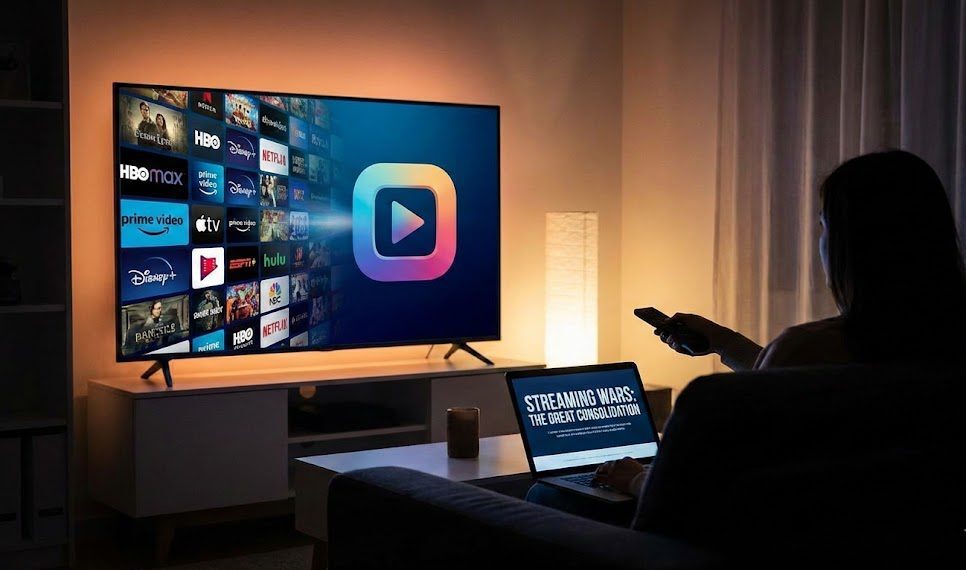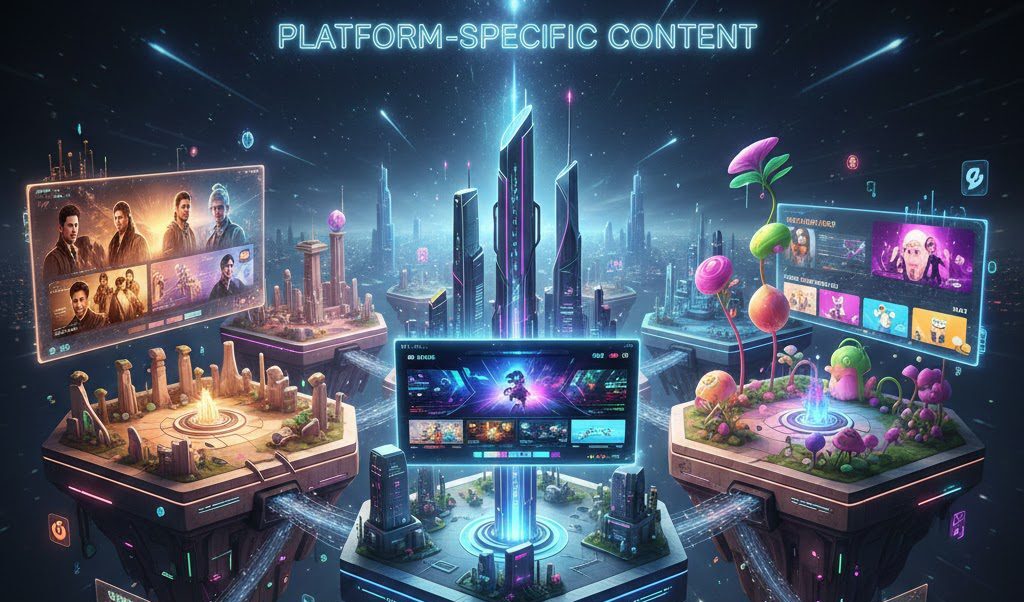Introduction
Welcome to the vibrant and ever-expanding universe of animation! From beloved children’s shows and blockbuster family films to cutting-edge adult animation and globally acclaimed anime, animated content holds a unique power to captivate audiences of all ages. But how does this imaginative content travel from creators’ minds to screens worldwide? The answer lies in a strategic approach to sourcing, licensing, and distribution, increasingly powered by market intelligence.
This ultimate Animated Content Licensing Guide for 2024 is designed for content buyers seeking the next hit, animation companies aiming to maximize their global reach, and industry professionals looking to navigate this dynamic sector. We’ll explore everything from how to license animated content and effective distribution strategies to the crucial role of data in making smarter decisions. Let’s dive into the colorful world of animation deals!
Table of content
- Introduction
- Key-Takeaways
- What Makes Animated Content Licensing Unique?
- For Content Buyers: How to Strategically License Animated Content
- For Animation Companies/Sellers: Maximizing Global Distribution and Sales
- The Power of Market Intelligence in Animation Licensing
- Deep Dive: Licensing Specific Animation Genres (Kids, Adult, Anime)
- The Business of Animation: Rights, Royalties, and Monetization
- Future Trends in Animation Licensing and Distribution
- How Vitrina AI Supports the Animated Content Ecosystem
- Conclusion
- FAQs
Key Takeaways
| Pillar Aspect | Core Insight |
|---|---|
| Animated Content Licensing Guide Overview | A comprehensive resource for understanding the unique aspects of sourcing, licensing, and distributing animated films and series. |
| Sourcing & Acquisition | Buyers need targeted strategies to find and license animated content that fits their platform and audience, from kids’ animation to adult series. |
| Distribution & Sales for Sellers | Animation companies can maximize reach and revenue through diverse animation distribution platform choices and global sales strategies. |
| Market Intelligence | Leveraging data on animation market trends, audience demand, and content performance is crucial for both buyers and sellers. |
| Unique Genre Considerations | Kids’ animation, adult animation, anime, and educational animation each have distinct licensing dynamics and opportunities. |
| Monetization Strategies | Understanding the value of animated content and various revenue models is key to successful animation monetization strategies. |
| Vitrina’s Role | Platforms like Vitrina leverage AI and data to help buyers discover animated content and sellers connect with global opportunities. |
Want to Master Animation Acquisition or Sales?

What Makes Animated Content Licensing Unique?
While sharing fundamental principles with general content licensing, animated content licensing has several unique characteristics. Animation often involves significant upfront investment in creation, distinct target audiences (from pre-schoolers to adults), a strong potential for ancillary rights (merchandising, games), and a remarkable evergreen quality, meaning popular animated shows and films can be re-licensed for decades. Furthermore, the global appeal of animation, often transcending language barriers more easily than live-action, makes international animation licensing a particularly vibrant field. Understanding these nuances is the first step in this Animated Content Licensing Guide.
Key Differentiators:
- Long Production Cycles & High Costs: Feature-quality animation and high-end series can be very expensive and time-consuming to produce, impacting initial licensing valuations.
- Target Audience Specificity: Content is often highly targeted (e.g., pre-school, kids 6-11, teens, adult animation), requiring buyers to have a clear understanding of their demographic’s needs.
- Evergreen Potential & Franchising: Successful animated IP can become enduring franchises with immense value across multiple licensing windows, re-releases, and merchandise. Think of classic Disney or Warner Bros. animation.
- Localization Importance: While visually universal, high-quality dubbing and cultural adaptation are crucial for international success, especially for children’s content.
- Strong Ancillary Markets: Toys, games, apparel, and other merchandise are often significant revenue streams tied to animated properties.
The Role of Co-Productions and Pre-Sales:
Due to high production costs, international co-productions are very common in animation, allowing producers to pool resources and access multiple markets. Pre-sales (licensing rights to territories or platforms before the animation is completed) are also a vital financing mechanism for many animation projects. This proactive approach is central to the business of animation.
| Unique Aspect of Animation | Implication for Licensing | Example |
|---|---|---|
| Evergreen Quality | Long-term re-licensing potential, library value. | Classic animated series remaining popular for decades. |
| Targeted Demographics | Requires precise audience matching by buyers. | A pre-school channel specifically looking to license animated content for under 5s. |
| Strong Merchandising Potential | Ancillary rights become highly valuable. | Successful kids’ show leading to toy lines, games, apparel. |
For Content Buyers: How to Strategically License Animated Content
For TV channels, streaming services, and OTT platforms, acquiring the right animated content is key to engaging specific demographics, particularly children and families, but also the growing audience for adult animation and anime. A strategic approach to how you license animated content involves understanding genre trends, knowing where to source animated films and series, and effectively evaluating properties for their fit and potential. This section of our Animated Content Licensing Guide focuses on the buyer’s journey.
Identifying Your Platform’s Animation Needs:
- Audience Analysis: Who is your core target demographic for animation? Pre-schoolers, kids 6-11, teens, young adults, families? What are their preferences?
- Content Gaps: Where are the gaps in your current animated offerings? Do you need more educational content, adventure series, comedies, or internationally acclaimed anime?
- Brand Alignment: Does the tone and messaging of the animated content align with your platform’s overall brand?
- Competitive Landscape: What animated content are your competitors offering? How can you differentiate?
Sourcing and Evaluating Animated Content:
- Key Animation Markets & Festivals: Events like Annecy, Kidscreen Summit, MIPJunior, and major film/TV markets are crucial for discovering new animated projects and meeting rights holders.
- Distributors Specializing in Animation: Many distributors focus specifically on kids’ content or animation.
- Online Marketplaces: Platforms like Vitrina provide access to global catalogs of animated content, allowing targeted searches for kids animation acquisition or specific genres.
- Evaluation Criteria: Story quality, animation style and quality, character appeal, educational value (if applicable), potential for co-viewing, existing brand awareness, and rights availability/cost.
This is central to acquiring the right VOD animation.
Negotiating Licenses for Animated Content:
Key considerations when you buy animation rights:
- Rights Package: Number of episodes/seasons, language versions (availability of dubs/subs), exclusivity, term length, platform rights (SVOD, AVOD, linear).
- Ancillary Rights: Are any merchandising or promotional rights included or available separately?
- Marketing Support: What marketing assets or support will the licensor provide?
- Content Delivery: Technical specifications, delivery timelines.
Understanding animated series licensing terms is vital.
| Buyer Consideration | Strategic Question | Importance |
|---|---|---|
| Audience Fit | Will this animation resonate with our target viewers? | Drives engagement and viewership. |
| Content Quality & Appeal | Is the animation style, story, and character design strong? | Reflects on platform brand, viewer satisfaction. |
| Rights & Cost | Are the necessary rights available at a viable price point? | Ensures ROI and legal compliance. |
For Animation Companies/Sellers: Maximizing Global Distribution and Sales
For animation studios, producers, and distributors, the goal is to maximize the global reach and revenue of their creative work. Developing effective animation distribution platform strategies and knowing how to sell animated series rights or distribute animated film projects internationally is key. This involves understanding market demands, preparing content for international buyers, and leveraging various sales channels, including modern animation content marketplace for sellers. This part of the Animated Content Licensing Guide focuses on the seller’s perspective to successfully monetize animation catalog assets.
Preparing Your Animated Content for International Sale:
- High-Quality Master Materials: Ensure technically sound master files, M&E tracks (essential for dubbing), scripts, and dialogue lists.
- Marketing Package: Develop compelling trailers, synopses, character art, series bibles, and an EPK.
- Localization Assets (Potential): Having existing English dubs/subs can increase appeal for some international buyers, or be prepared to discuss localization needs.
- Clear Chain of Title: Ensure all underlying rights (music, original IP if adapted) are fully cleared and documented.
Developing a Global Sales and Distribution Strategy:
- Direct Sales vs. Sales Agents/Distributors: Decide whether to handle international sales in-house or partner with specialized animation distributors or sales agents who have existing buyer networks.
- Targeting Key Territories: Research which international markets have a strong appetite for your type of animation.
- Windowing Strategy: Plan how to release content across different platforms (TV, VOD, theatrical for films) in various territories.
- Attending Markets: Participate in key animation and content markets to meet buyers.
- Using Online Marketplaces: List your catalog on platforms like Vitrina to reach a global audience of content acquirers efficiently.
Pricing and Deal Structures for Animation:
- Valuation: Understand the market value of your content based on genre, quality, existing success (if any), and comparable titles.
- License Fees: Negotiate flat fees, MGs, or revenue-share deals depending on the buyer, platform, and rights package.
- Package Deals: Offer multiple series or a library of films to secure larger deals.
- Ancillary Rights: Don’t forget the potential value of merchandising, gaming, or publishing rights.
| Seller Strategy | Objective | Key Action |
|---|---|---|
| Content Preparation | Make content attractive and ready for buyers. | Create strong marketing materials, ensure technical/legal readiness. |
| Market Outreach | Connect with relevant international buyers. | Attend markets, use online platforms, work with distributors. |
| Deal Negotiation | Secure favorable terms and maximize revenue. | Strategic pricing, clear rights definition, protect IP. |
Ready to Leverage Market Intelligence for Animation?

The Power of Market Intelligence in Animation Licensing
In the competitive world of animated content licensing, making informed decisions is paramount. This is where market intelligence – understanding current animation market trends, buyer demand, regional preferences, and content performance – becomes a superpower for both buyers and sellers. Leveraging animation industry data and animation data analytics can transform your sourcing, sales, and distribution strategies from guesswork into data-driven precision. This section of the Animated Content Licensing Guide highlights how intelligence can illuminate the path to success.
Why Market Intelligence is Crucial:
- For Buyers: Helps identify which animation genres are trending, what types of content are performing well with their target demographics, what competitors are acquiring, and what fair market prices look like. This informs decisions on what to license animated content for.
- For Sellers: Provides insights into which territories and platforms have the highest demand for their specific type of animation, what buyers are currently looking for (demand for animated content), and how to price their content competitively. This is key to effective animation monetization strategies.
Sources of Animation Market Intelligence:
- Industry Reports & Publications: Many organizations publish reports on animation trends, viewership data, and market forecasts.
- Content Markets & Conferences: Excellent for hearing firsthand about buyer needs and emerging trends.
- Competitor Analysis: Observing what types of animated content are being licensed and promoted by similar platforms or sold by similar distributors.
- Data Analytics Platforms: Specialized platforms like Vitrina aggregate and analyze vast amounts of data on content availability, deals, buyer requests, and industry projects (e.g., via its Project Tracker). These platforms use AI to provide actionable insights, showing, for example, the most popular animated series by region or highlighting specific animation licensing opportunities.
Using Data to Inform Strategy:
Market intelligence can help answer critical questions:
- What are the trending animated content styles or themes?
- Is there more demand for kids animation acquisition or adult animation licensing in a particular market?
- What’s the typical license fee range for a 2D animated series versus a 3D animated feature in Latin America versus Southeast Asia?
- Which platforms are actively seeking anime licensing opportunities?
Access to reliable animation industry data empowers smarter, more strategic decision-making.
| Intelligence Area | Benefit for Buyer | Benefit for Seller |
|---|---|---|
| Genre Trends | Identify popular and up-and-coming animation styles. | Align production/catalog with market demand. |
| Buyer Demand Data | Understand what specific platforms are looking for. | Target sales efforts more effectively. |
| Pricing Benchmarks | Negotiate fair license fees. | Set appropriate pricing for their content. |
Deep Dive: Licensing Specific Animation Genres (Kids, Adult, Anime)
The broad term “animation” encompasses a rich variety of genres and styles, each with its own target audience, market dynamics, and licensing considerations. This Animated Content Licensing Guide would be incomplete without a closer look at some key categories. Strategically, how one approaches licensing a pre-school series differs significantly from licensing a mature-themed adult animation or a culturally distinct anime property. Understanding these genre-specific nuances is vital when looking to license animated content effectively.
Kids’ Animation Licensing (Pre-school, Children 6-11):
- High Demand: Consistently strong demand from linear kids’ channels, SVOD platforms (dedicated kids’ sections), and AVOD services.
- Key Factors: Educational value (for pre-school), positive messaging, strong characters, humor, adventure, potential for merchandising and franchise building.
- Localization: High-quality dubbing is essential. Cultural sensitivities must be carefully managed.
- Safety & Compliance: Content must adhere to strict child safety regulations and broadcast standards in different territories.
- Opportunity: Evergreen potential, strong brand loyalty, lucrative ancillary rights. This is a core area for kids animation acquisition.
Adult Animation Licensing:
- Growing Market: Significant growth in demand, driven by streaming platforms and a desire for edgier, more mature animated storytelling (comedies, dramas, action).
- Key Factors: Unique comedic voice, complex narratives, distinct art styles, appeal to young adult/adult demographics.
- Target Platforms: SVOD services with adult-focused sections, some late-night broadcast slots, specialized AVOD channels.
- Challenges: Can be harder to sell to traditional family-focused broadcasters; cultural sensitivities around humor or themes can vary greatly by territory.
- Opportunity: Strong cult followings, critical acclaim, potential for merchandise appealing to an older demographic.
Anime Licensing (Japanese Animation):
- Global Phenomenon: Massive dedicated fanbase worldwide, driving strong demand for both new and classic anime series and films.
- Key Factors: Unique art styles, diverse genres (shonen, shojo, mecha, slice-of-life, etc.), established franchises, strong community engagement.
- Target Platforms: Specialized anime streaming services (e.g., Crunchyroll), global SVODs with anime libraries, some broadcasters. A dedicated Japanese anime marketplace exists within the broader content market.
- Localization: High-quality subtitles are often preferred by core fans, but dubs are also important for broader reach. Maintaining original names and cultural nuances is key.
- Opportunity: Extremely loyal fanbase, high engagement, potential for theatrical releases of event films.
| Animation Genre | Primary Target Audience | Key Licensing Driver | Typical Buyers |
|---|---|---|---|
| Kids (Pre-school/6-11) | Children, Families | Educational value, character appeal, franchise potential. | Kids’ TV channels, SVODs with family sections. |
| Adult Animation | Young Adults, Adults | Unique humor/story, distinct style, mature themes. | SVODs, some broadcasters (late night), AVOD. |
| Anime | Teens, Young Adults, Dedicated Fans | Franchise strength, art style, genre appeal. | Specialized anime platforms, global SVODs. |
The Business of Animation: Rights, Royalties, and Monetization
Understanding the commercial aspects is fundamental to success in animated content licensing. The business of animation revolves around effectively managing animation content rights management, structuring appropriate licensing deals, and implementing robust animation monetization strategies to ensure a return on the significant investment often required to produce high-quality animation. This section of the Animated Content Licensing Guide explores how the value of animated content is realized through various financial models and rights exploitation.
Key Revenue Streams for Animated Content:
- License Fees: Direct payments from broadcasters, streaming platforms, and other licensees for the right to exhibit the content (e.g., flat fees, minimum guarantees).
- Royalties/Revenue Share: A percentage of revenue generated by the content on certain platforms (e.g., from TVOD sales, AVOD advertising, or sometimes SVOD performance).
- Theatrical Box Office (for films): A share of cinema ticket sales.
- Home Entertainment: Sales and rentals of DVDs, Blu-rays, and digital downloads/rentals (TVOD).
- International Sales: Licensing to different territories worldwide is a major revenue driver.
- Format Sales (for TV series): Licensing the concept of a show for local adaptation in other countries.
- Merchandising & Consumer Products: A huge potential revenue stream for successful animated IP (toys, apparel, games, books, etc.). These are often handled through separate merchandise licensing deals.
- Ancillary Rights: Publishing, gaming, live shows, and other spin-off opportunities.
Understanding Animation Licensing Deals Explained:
Animation licensing deals can be complex. Key financial terms often include:
- License Fee/MG: As discussed in previous sections. The amount will depend on the exclusivity, territory, term, platform, and perceived value of the animated property.
- Payment Schedules: When payments are due (e.g., on signature, on delivery of materials, annually).
- Reporting: For royalty or revenue share deals, clear and transparent reporting mechanisms are crucial.
- Withholding Taxes: How cross-border taxes on license fees will be handled.
The overall financial structure should align with the value of animated content and the risk/reward profile desired by both parties.
The Role of Data in Animation Monetization Strategies:
Data-driven animation sales are becoming increasingly important. Understanding:
- Audience preferences for different animation styles and genres in specific territories.
- Performance metrics of comparable animated titles on various platforms.
- Pricing benchmarks for different types of rights.
This data, which can be gleaned from platforms like Vitrina, helps sellers optimize their pricing, target the right buyers, and make informed decisions to maximize animation industry revenue. Leveraging AI for animation distribution insights is also a growing trend.
| Monetization Aspect | Description | Importance for Animation |
|---|---|---|
| Multi-Platform Licensing | Exploiting rights across TV, VOD, theatrical, etc. | Maximizes reach and revenue streams. |
| International Sales | Selling rights to different global territories. | Animation often travels well; significant revenue potential. |
| Merchandising & Ancillaries | Leveraging IP for consumer products, games, etc. | Can be a major long-term revenue driver for popular properties. |
| Data-Driven Valuation | Using market data to inform pricing and deal structures. | Ensures fair value, optimizes negotiation outcomes. |
Future Trends in Animation Licensing and Distribution
The world of animated content licensing is constantly evolving, shaped by technological advancements, shifting audience behaviors, and new business models. Staying ahead of these future trends is crucial for creators, distributors, and platforms looking to succeed in the years to come. This Animated Content Licensing Guide highlights some key developments that are likely to influence how animation is created, distributed, and monetized, including the role of AI for animation distribution and new forms of animation monetization strategies.
Key Trends to Watch:
- Rise of Global Streaming & Continued Demand: Global SVODs and emerging AVOD/FAST channels will continue to drive strong demand for all types of animated content, from big-budget originals to library titles.
- Increased Use of AI and Data Analytics: AI will play a greater role in content discovery, audience targeting, performance prediction, and potentially even in aspects of the animation production pipeline itself. Data-driven animation sales will become standard.
- Growth in Adult Animation: The appetite for sophisticated, mature-themed animated content for adult audiences is expected to continue growing globally.
- Interactive and Immersive Animation: Exploration of licensing animated IP for interactive games, VR/AR experiences, and potentially metaverse applications.
- Focus on Diversity and Representation: Increasing demand for animated content that reflects diverse cultures, voices, and perspectives from around the world.
- Short-Form Animation for Digital Platforms: Growth in opportunities for animated shorts and snackable content on social media and mobile-first platforms.
- Sustainable Production and Virtual Production: Animation studios may increasingly adopt more sustainable and efficient production techniques, including virtual production tools.
- Direct-to-Consumer (D2C) Models: Some larger animation studios or IP holders might explore more D2C offerings, though broad licensing will remain key.
Adapting to these trends will be vital for all players in the animation industry revenue chain.
| Future Trend | Potential Impact on Animation Licensing |
|---|---|
| AI & Data Analytics | More targeted acquisitions, data-informed pricing, efficient discovery. |
| Global Streaming Dominance | High demand for diverse animation, complex global deals, evolving windowing. |
| Interactive/Immersive Content | New licensing categories and revenue streams for animated IP. |
| Focus on Diversity & Inclusion | Increased demand for stories from underrepresented creators and cultures. |
How Vitrina AI Supports the Animated Content Ecosystem
Navigating the complexities and opportunities within animated content licensing requires powerful tools and accurate market intelligence. Vitrina is an AI-powered platform designed to support buyers, sellers, and distributors throughout the animation licensing lifecycle. By providing a global marketplace, data-driven insights, and efficient connectivity, Vitrina helps users make smarter decisions and achieve their business goals in the dynamic world of animation.
For buyers looking to license animated content, Vitrina offers an extensive database of animated films and series from around the world. Its AI-driven search and recommendation engine helps acquirers quickly find content that matches their specific needs, whether it’s kids animation acquisition for a new channel, sourcing unique international animation licensing opportunities, or finding trending VOD animation. Access to detailed metadata, screeners, and seller profiles streamlines the evaluation process.
For animation companies and sellers, Vitrina serves as a powerful animation distribution platform and animation content marketplace for sellers. It provides global visibility for their catalogs, connecting them with a verified network of international buyers. Vitrina’s market intelligence tools, including insights on animation market trends and demand for animated content (potentially through features like its Project Tracker), can help sellers identify promising territories, price their content effectively, and refine their animation monetization strategies. By facilitating connections and providing actionable data, Vitrina empowers the entire animation ecosystem.
| Vitrina AI Capability | Benefit for Animation Buyers | Benefit for Animation Sellers |
|---|---|---|
| AI-Powered Content Discovery | Quickly find relevant animated titles matching specific criteria. | Get content seen by targeted, interested buyers. |
| Global Network | Access diverse international animation catalogs. | Reach buyers in numerous global territories. |
| Market Intelligence & Trends | Make data-informed acquisition decisions. | Optimize sales strategy, identify new opportunities. |
Conclusion
The world of animated content licensing is as diverse and dynamic as animation itself. From securing the rights for the next global kids’ sensation to finding the perfect niche anime series for a dedicated fanbase, the process involves strategic sourcing, careful evaluation, skillful negotiation, and an understanding of unique genre-specific considerations. As this Animated Content Licensing Guide has shown, market intelligence, data analytics, and leveraging modern platforms are becoming increasingly vital for both buyers looking to license animated content and sellers aiming to maximize their animation monetization strategies globally.
The future promises even more exciting developments, with AI and new technologies continuing to reshape how animated content is discovered, distributed, and valued. By staying informed on animation market trends and embracing innovative tools like Vitrina, industry professionals can confidently navigate this vibrant ecosystem and bring more animated magic to screens worldwide. For a comprehensive foundation on all aspects of licensing, our Definitive Guide to Content Licensing is an invaluable resource.
Ready to explore the world of animated content licensing or distribution? Discover how Vitrina empowers buyers and sellers with AI-driven insights and a global marketplace for animation.
Frequently Asked Questions
Some text
Independent animators can submit their work to festivals (many of which are markets), seek representation from sales agents specializing in shorts or independent animation, or list their content on online marketplaces. Networking and building an online presence are also key for sell independent animation efforts.
Ancillary rights refer to rights beyond the primary exhibition of the animated content itself. For animation, this is huge and can include merchandising (toys, apparel, books), video games, theme park attractions, publishing, and soundtracks. These are often licensed separately and can be very lucrative.
Yes, anime licensing has some unique aspects. There’s a highly dedicated global fanbase, often a preference for subtitles over dubs (though dubs are also important), and established distribution channels and platforms specializing in anime. The Japanese anime marketplace is a significant source. Deals often involve managing rights for multiple seasons of long-running series.


